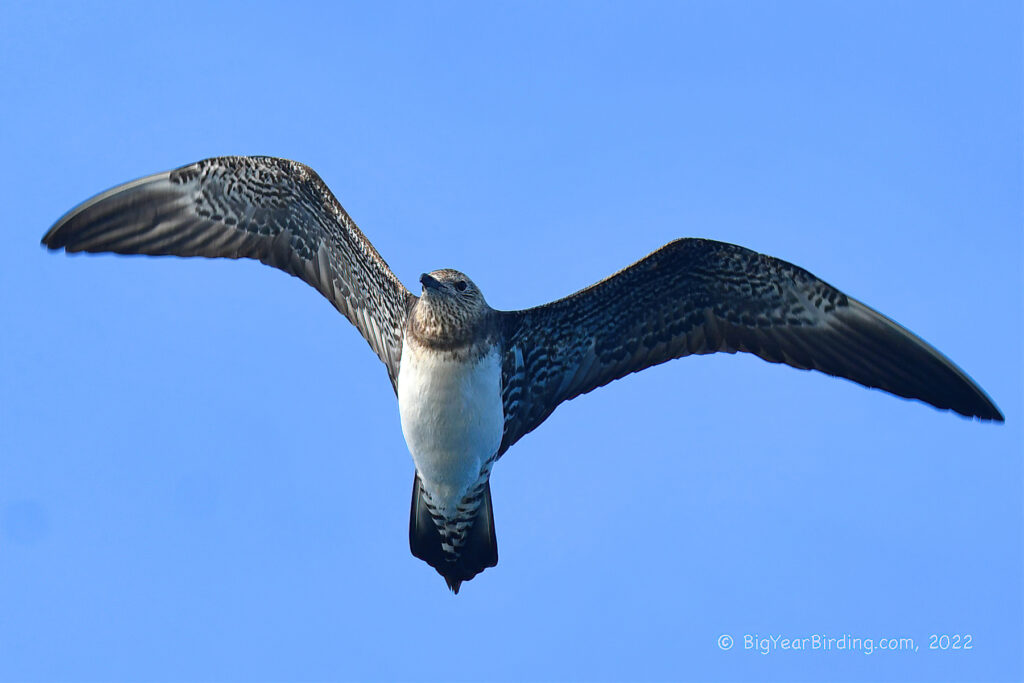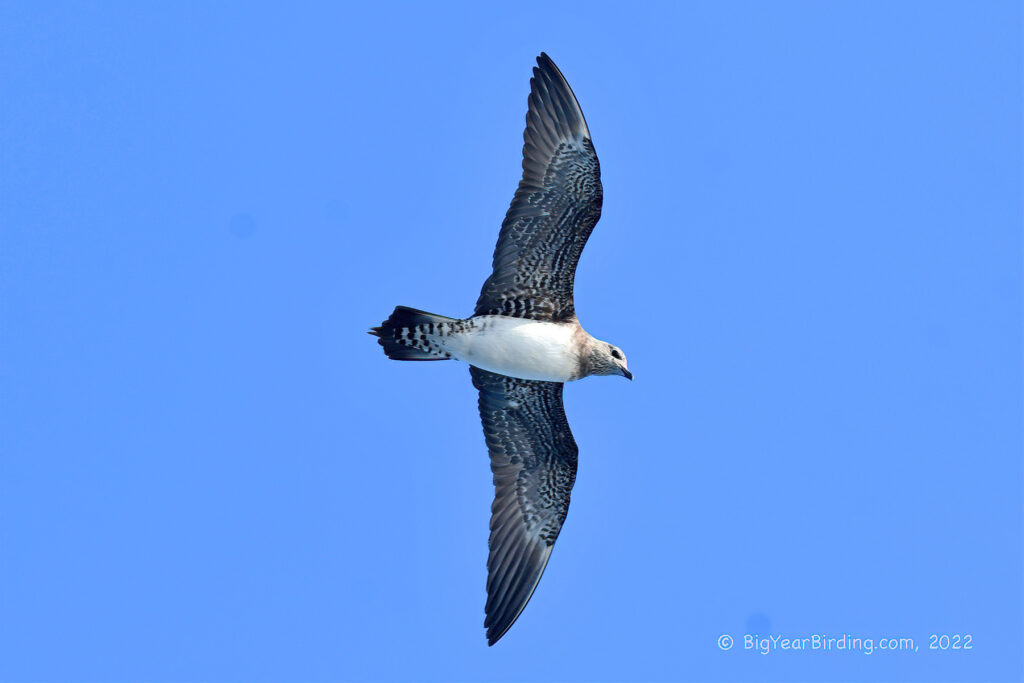
The Long-tailed Jaeger (Stercorarius longicaudus) is a medium-sized seabird that belongs to the family Stercorariidae. It is one of three jaeger species found in North America, with a distinctive appearance and remarkable aerial hunting skills. Adults typically measure around 16-22 inches in length, with a wingspan of 42-49 inches. They weigh around 8-13 ounces, with males being slightly larger than females.
Long-tailed Jaegers have striking field marks that make them easily recognizable. They have a dark brown plumage on the back and wings, with a paler head, neck, and underparts. Their most distinguishing feature is the elongated central tail feathers, which can measure up to 10 inches long and are sharply pointed. In flight, the tail feathers form a distinctive V-shape, and the bird’s flight pattern is often erratic and swift.

The Long-tailed Jaeger is a highly migratory species that breeds in the Arctic tundra and winters in the open ocean. During the breeding season, they can be found in northern Alaska, Canada, and Greenland. They typically lay one to two eggs in a shallow scrape on the ground, and both parents participate in incubation and chick-rearing. In the fall, they begin their southward migration and can be seen along the coasts of North and South America, as well as in the Pacific Islands and Australia.

Long-tailed Jaegers are highly skilled predators, specializing in capturing other seabirds and small mammals in mid-air. They are also known to scavenge on carcasses and steal food from other birds. During the breeding season, they are fiercely territorial and will aggressively defend their nests from predators and other birds. Despite their predatory nature, they are vulnerable to climate change and habitat destruction, and their populations are declining in some regions.
In summary, the Long-tailed Jaeger is a striking seabird with a distinctive appearance and impressive aerial hunting skills. They breed in the Arctic tundra and migrate southward to the open ocean during the winter months. Their elongated central tail feathers and erratic flight pattern make them easily recognizable in the field. While they are skilled predators, they are also vulnerable to environmental threats and require conservation efforts to ensure their survival.

